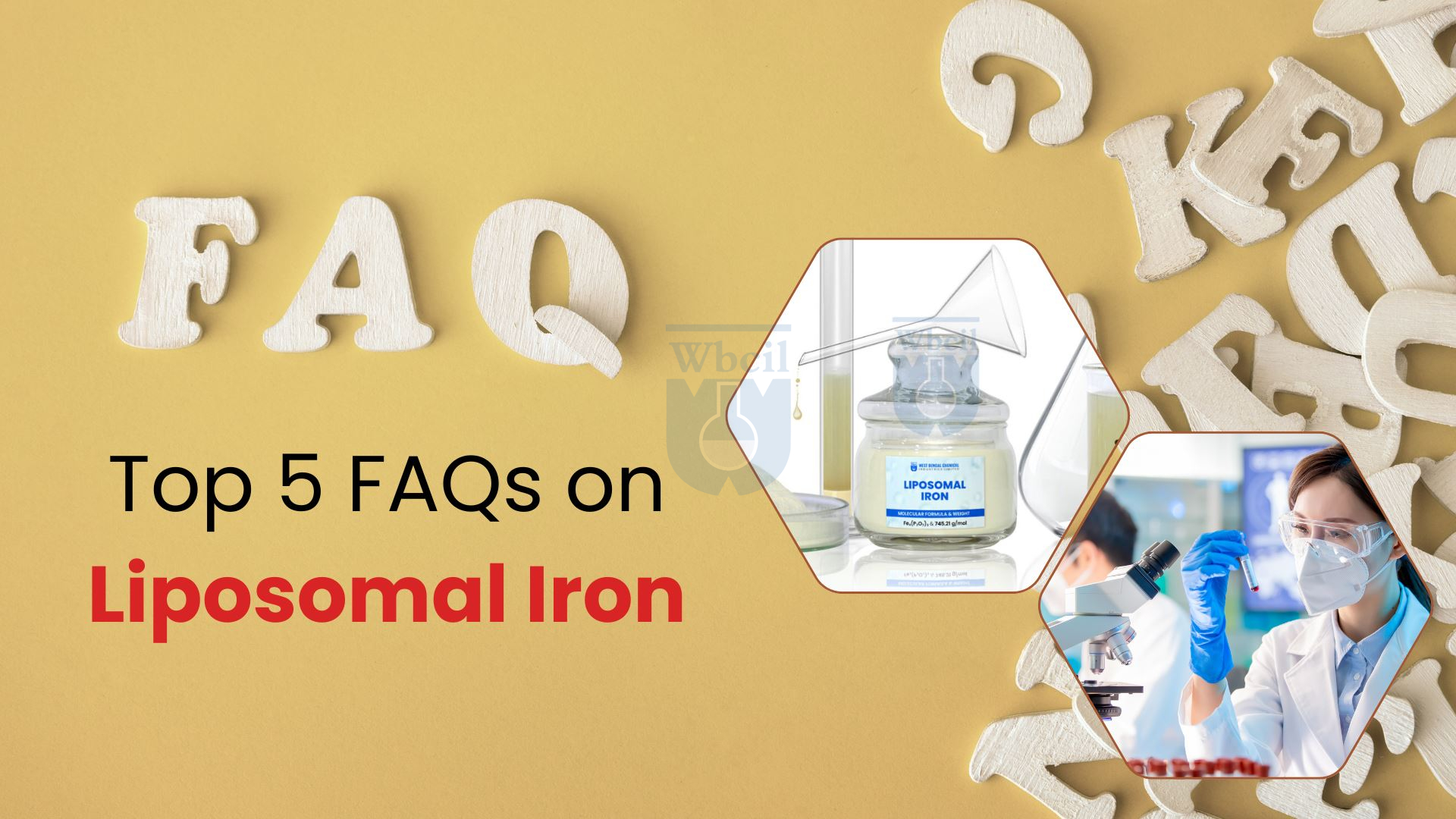Top 5 FAQs About Liposomal Iron
1. What is liposomal iron and how is it different from conventional iron supplements?
Liposomal iron is an advanced form of iron supplementation that uses liposome technology to deliver iron more effectively to your body. Unlike conventional iron supplements, liposomal iron encapsulates iron within phospholipid bilayers—tiny spherical structures made from the same materials as cell membranes.
The key differences are substantial. Conventional iron supplements expose the iron directly to your stomach acid, which can cause oxidation and damage to the intestinal lining. This direct contact often leads to uncomfortable side effects like nausea, constipation, metallic taste, and gastric irritation. In contrast, liposomal iron’s protective phospholipid coating shields it from gastric acidity, allowing it to pass through the stomach unchanged and get absorbed directly in the intestine without damaging the gastrointestinal mucosa.
Another critical difference lies in absorption efficiency. Conventional iron has only about 10% absorption rate, requiring high doses of 100mg or more. Liposomal iron achieves 30-35% absorption—three times higher—meaning effective supplementation can be achieved with just 30mg doses. This reduced dosage minimizes side effects while maximizing benefits. Additionally, liposomal iron doesn’t chelate with other metals or interfere with the absorption of nutrients like calcium, zinc, and magnesium, making it safe to take alongside other supplements.
2. How does liposomal iron get absorbed in the body?
The absorption mechanism of liposomal iron is fundamentally different from traditional iron supplements, offering a more sophisticated and efficient pathway. When you consume a liposomal iron supplement, the liposomes protect the iron as it travels through your stomach. Being resistant to the acidic environment, the encapsulated iron remains intact and undegraded.
Once the liposomes reach the small intestine, specifically the duodenum, they release iron into the intestinal lumen. The key advantage is that absorption occurs through specialized intestinal M cells, bypassing the typical barriers that reduce conventional iron absorption. This targeted delivery system means the iron enters your bloodstream more efficiently without causing oxidative damage to the intestinal epithelium.
Remarkably, liposomal iron bypasses both stomach and liver exposure during initial absorption, going directly into circulation.
The bioavailability profile is superior—plasma concentration of liposomal iron reaches its maximum just 2 hours after consumption, compared to slower absorption with non-liposomal forms. Once in the bloodstream, the absorbed iron binds to transferrin and is distributed throughout the body for use in hemoglobin production, enzyme function, and other essential metabolic processes.

3. What are the side effects of liposomal iron compared to regular iron supplements?
One of the most compelling advantages of liposomal iron is its significantly reduced side effect profile. Traditional iron supplements are notorious for causing gastrointestinal distress because free iron ions can promote oxidative stress and directly irritate the digestive tract lining. Common complaints include nausea, constipation, diarrhea, stomach cramps, metallic taste, and general gastric discomfort.
Liposomal iron is almost devoid of these side effects. Because the iron is encapsulated within protective liposomes, it doesn’t come into direct contact with the gastrointestinal mucosa. This means no oxidative damage to intestinal epithelial cells and minimal to absent gastrointestinal side effects, even at higher doses. Users don’t experience the characteristic metallic taste associated with regular iron supplements.
Furthermore, conventional iron supplements can interfere with the absorption of other essential nutrients and may chelate with other metals in your system, potentially creating additional nutritional imbalances. Liposomal iron has a reduced impact on the absorption of other nutrients like calcium, zinc, and magnesium, making it a more versatile option that can be taken alongside other supplements without contraindications. The controlled release mechanism also minimizes the risk of iron promoting harmful oxidative stress in the body.
4. How effective is the encapsulation technology, and does it remain stable over time?
The quality and stability of liposomal iron products are critical factors that have been rigorously tested. Quality liposomal iron demonstrates an encapsulation efficiency of approximately 89%, meaning nearly 90% of the iron is successfully trapped within the liposomal structure. This high encapsulation rate ensures consistent delivery and effectiveness.
Particle size analysis shows that within the range of 18-200 mesh (1000 micron to 75 micron sieve size), encapsulation efficiency remains above 85% regardless of particle size. The liposomes themselves typically measure 15-16 micrometers with uniform spherical morphology when properly coated with 10% soy lecithin.
Stability testing demonstrates that liposomal iron maintains its integrity over time. In accelerated stability studies conducted at 40°C and 75% humidity over six months, encapsulation efficiency remained high (starting at 89.5% and maintaining 87% at six months), with elemental iron assay staying within acceptable ranges (7.8-9.0%). The zeta potential—a measure of colloidal stability—registers at approximately -32 mV at pH 7.0, well above the ±30 mV threshold that indicates stable suspension and prevents aggregation of the liposomal formulation.
5. Can liposomal iron be taken with food and other supplements?
Yes, this is another significant advantage of liposomal iron. Unlike conventional iron supplements that have notable food interactions and must often be taken on an empty stomach (which can worsen gastrointestinal side effects), liposomal iron shows no food effect. You can take it with or without meals according to your preference and convenience.
The protective liposomal coating ensures that dietary components don’t interfere with iron absorption, and conversely, the encapsulated iron doesn’t interfere with the absorption of nutrients from your food. This flexibility makes liposomal iron much easier to incorporate into daily routines without the strict timing requirements of traditional supplements.
Additionally, because liposomal iron doesn’t chelate with other metals or significantly impact the absorption of other nutrients, it can be safely combined with other dietary supplements including calcium, zinc, and magnesium—combinations that would typically be problematic with conventional iron.
This makes liposomal iron particularly valuable for individuals taking comprehensive supplement regimens or those with multiple nutritional deficiencies requiring simultaneous correction.
